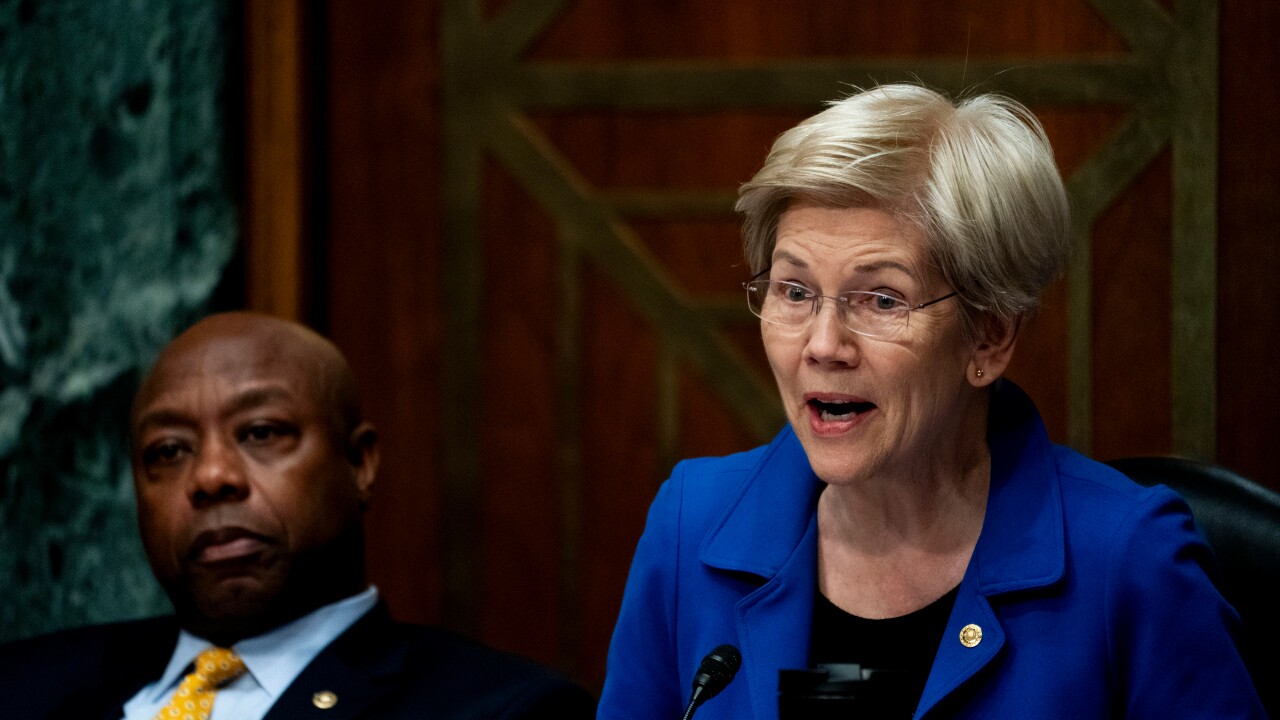WASHINGTON — Congress is widely expected to pass legislation this year that will increase the line at which a big bank is considered systemically risky, but banks below that threshold won’t get a free pass.
Rather, banks will have to decide whether they want to restructure their business in exchange for less regulation.
“It will be a sober and complete analysis which will take some time [reviewing] what the new regulatory regime means to an individual bank,” said Brian Gardner, an analyst at Keefe, Bruyette & Woods. “I don’t think that is a decision that is made quickly. I think it will take some time to come up with a decision.”

The bill negotiated between Senate Banking Committee Chairman Mike Crapo, R-Idaho, and moderate Democrats, which was approved with bipartisan support by the Senate last week, would change the Dodd-Frank Act's “systemically important financial institution” threshold from $50 billion in assets to $100 billion in assets immediately, and then raise it again to $250 billion after 18 months.
However, the statute provides that the Federal Reserve Board can still deem banks with more than $100 billion in assets systemically important and impose stricter regulatory requirements. The Fed must still conduct "periodic" stress tests for bank holding companies above that $100 billion threshold, although the bill does not specify what "periodic" means.
In his first press conference Wednesday since becoming head of the central bank, Fed Chairman Jerome Powell said the regulator would not shy away from maintaining prudential standards for banks between the $100 billion and $250 billion. The Fed has already placed the onerous tag of "global systemically important bank" on one bank in that bucket, the $235 billion-asset State Street.
“We haven’t been shy about doing that, because one of the eight [G-SIBs] is below $250 [billion] already,” Powell said. “We are fully prepared to do that.”
Much of the rhetoric surrounding the bill assumes that all banks below $250 billion — besides State Street — will be free of the additional regulation that comes with tougher Fed oversight designation.
But Powell told the Senate Banking Committee earlier this month that if the legislation is passed, the Fed will develop a framework to determine what makes a bank below $250 billion still systemically risky, and to keep those banks under the supervisory microscope.
“Whatever framework the Fed comes up with will probably share some similarities with the framework [the Financial Stability Oversight Council] used in reviewing nonbank SIFIs,” said Gardner. He noted that an institution's size — which is the easiest to measure — would likely be just one factor, along with more qualitative measures such as complexity, interconnectedness and activities.
The determination could come down simply to whether an institution is serving traditional banking functions of collecting deposits and lending to small businesses, versus specializing in more complex activities.
“The more Main Street the business, the less susceptible it is to being deemed systemically important," said Mike Alix, a partner at PwC. "The more Wall Street the business is, the greater the risk that it could be considered systemically important.”
Jeremy Kress, a lecturer in business law at the University of Michigan and a former Fed attorney, said State Street's status as a G-SIB suggests that the Fed views banks with custodial services as having systemic implications.
Another custodial bank, Bank of New York Mellon, already exceeds the $250 billion threshold in the Senate legislation. But the Fed's focus in supervising smaller institutions could have implications for a custodial bank like Northern Trust, which has $130 billion in assets.
“I'd also expect that liquidity will be an important indicator,” Kress said. “The crisis demonstrated that illiquidity is a critical risk factor, but $100 billion- and $250 billion-asset firms will no longer be subject to the modified liquidity coverage ratio” if the legislation pending in Congress passes.
“The Fed should pay special attention to firms that become significantly less liquid,” he said.
Gardner said some banks with assets of less than $250 billion may even decide to live with the SIFI status rather than shed profitable business lines.
“Since they have the framework in place … is it worth it for them to continue in their current environment?” Gardner said. “Those are going to be decisions that each bank makes individually after consultation with the Fed.”
However, some observers remain dubious that the Fed will be able to hold the feet of firms below $250 billion to the fire.
“Inevitably, all sorts of banks that receive heightened scrutiny" as a result of the current $50 billion threshold "are no longer going to receive that scrutiny" under the Crapo bill, said Dennis Kelleher, president and chief executive of the public interest group Better Markets.
Kelleher also pointed out that the Fed will likely be paying less attention to banks below $100 billion in assets, which would get a bright-line pass from the SIFI designation in the legislation.
“It is like firefighters are not going to be looking at buildings where there is smoke. They are only going to be looking at banks where there is actual fire,” Kelleher said. He argued that a bank with assets of $100 billion already poses risks to the broader economy.
Kress said the Fed’s resources would likely be constrained, forcing the central bank to focus only on the largest and riskiest firms that are part of its Large Institution Supervision Coordinating Committee portfolio.
“I am skeptical that the Fed will aggressively use its authority to dip below the $250 billion threshold,” he said. “As a practical matter, many of the Fed's supervisory resources are devoted to the LISCC firms, and I don't expect that they will monitor the $100 billion to $250 billion population as intently.”





